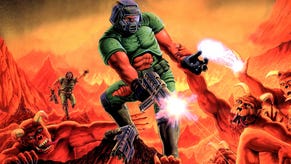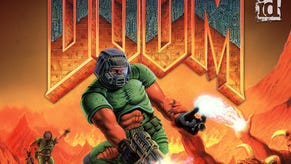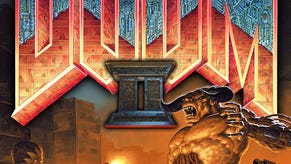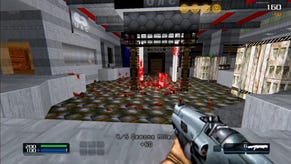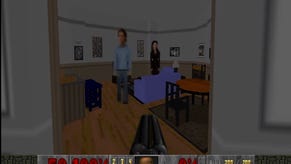Daily Classic: Doom II Proved the Value of More of the Same
If Doom established the FPS concept, its sequel revealed the genre's true potential.
This article first appeared on USgamer, a partner publication of VG247. Some content, such as this article, has been migrated to VG247 for posterity after USgamer's closure - but it has not been edited or further vetted by the VG247 team.
What matters more, advancement through innovation or improvement through iteration? This may well be the single most important – not to mention difficult – question when it comes to canonizing the history of video games.
Consider Doom and Doom II. The first game practically invented the first-person shooter; yes, other developers had created games in which players moved about in a first-person perspective and shot things, but never had it felt so intense. So huge. So fast. There's a reason, after all, that for its first few years the FPS genre didn't have an official designation. We just called them "Doom clones."
And then there was Doom II, which did very little to add to its predecessor's framework. The graphics weren't noticeably improved, you didn't see much in the way of new weapons. There were only a handful of new monsters, and even the environments generally looked about the same as previous game despite largely taking place on Earth rather than Mars. What Doom II did accomplish, however, was to explore the original Doom's fundamental concepts in more sophisticated ways.

Level designs retained the first game's free-form structure while presenting layouts that were at once more intricate yet less confusing than what had come before. Despite their general familiarity, Doom II's monsters appeared in more dangerous and challenging situations – up to and including its treatment of Doom's bosses as standard encounters – while at the same time their placement allowed for more potential interactions with one another rather than with the player alone. Smart space marines could stir up interspecies conflicts to trick their foes into thinning their own ranks before wading into the fray themselves. And finally, the first game's episodic structure gave way to a single continuous story; while the action still broke down into standalone levels, there were no chapter breaks resetting the gear you'd collected, building a greater sense of progress and consistency throughout the adventure.
Most importantly, though, Doom II greatly improved the multiplayer experience. The original Doom, distributed in an age of dial-up modems, was never meant to support online play, only local-area network multiplayer. Such was the game's popularity – not to mention its extensibility and appeal to computer-savvy types who regarded technical limitations not as absolutes but rather as puzzles to be cracked – that within a matter of months Doom fans had come up with a number of clever workarounds to let them go head-to-head via modem, including at least one short-lived business which existed expressly for that purpose. Many of Doom II's improvements involved its multiplayer tech, supporting not only LAN play but also services like DWANGO and direct peer-to-peer connections.
Yet while it improved on every single one of Doom's concepts, Doom II is generally treated as something of an afterthought when considering the series' legacy – the "oh yes, and also" footnote to all that the original game accomplished. After all, Doom didn't only cement the first-person shooter as a key pillar of the games industry (20 years later, most of the biggest and most widely played games worldwide descend directly from Doom). No, it also revolutionized game distribution, with a free four-level demo that players could download or pick up on free (or at least cheap) diskette samplers before purchasing the rest of the game.

Because it was so revolutionary and so widely accessible, Doom crowds the collective conscious of gamers who were, say, ages 13-25 in 1993 – the same ones (such as me) most likely to chronicle the history of the medium for the moment. The guttural moans of demons emerging from the darkness and mingling with the fast-paced MIDI jam "E1M1" has the same resonance for many gamers as the opening jingle of Super Mario Bros. or the staccato pulse of Call of Duty's rifles for games who cut their teeth in different decades But between Doom and Doom II, was the original the better game? Or was it simply the more important one?
In truth, it's a moot question. Neither game truly works without the other. We needed Doom to get the whole thing started, but Doom II demonstrated the potential of Doom's concepts. It revealed the value of refinement – a task every bit as essential as raw invention. Innovation and iteration go hand-in-hand as the motive forces of game design, and the original Doom duology offers a perfect glimpse of the very different faces of progress in action. If Doom invented the FPS, Doom II perfected it.


